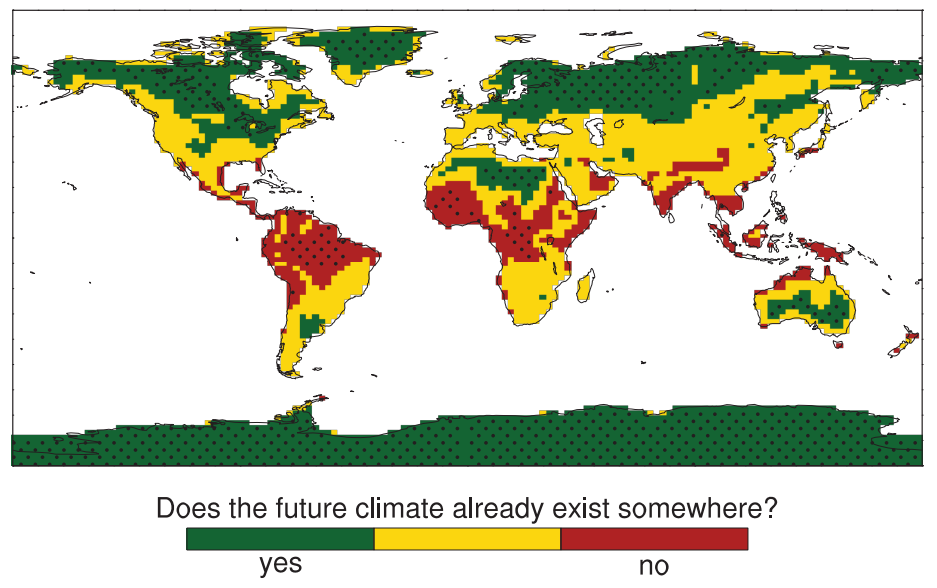
Video: Tropics to see ‘unprecedented’ climates under future warming
Robert McSweeney
06.05.17Robert McSweeney
05.06.2017 | 11:46amWithout action to curb CO2 emissions, more than a third of the world could face climates that are different from anything observed anywhere today, a new study finds.
The research, recently published in Environmental Research Letters, follows hot on the heels of a recent paper in Nature Climate Change, which looked at how global temperature rise means that billions of people will experience climates that are “unusual”, “unfamiliar” and “unknown” in the future.
While the new study is similar, it goes a step further by considering how rainfall is likely to change in the future, as well as temperature.
Co-author Dr Erich Fischer, from the Institute for Atmospheric and Climate Science at ETH Zürich, presented the study at the recent European Geosciences Union General Assembly in Vienna. Carbon Brief caught up with him to discuss the research, which you can see in the video clip below.
Unprecedented climates
The researchers had started out looking for “climate analogues”. This means identifying climates that already exist somewhere in the world today that match the future projected climate of a particular location.
But what they found was that large areas of the world had no climate analogues. In other words, their projected future climate was like nowhere else on Earth at the moment.
You can see this in the map below. The green shading shows areas that would have climate analogues under 2C of warming, while the red shading indicates areas that would not. In between, the yellow shading shows regions that would have climate analogues for some seasons of the year, but not others.
It’s worth noting that the 2C of warming used here is relative to 1986-2005, rather than pre-industrial levels. This means the warming is about 0.61C more than the 2C limit set out in the Paris Agreement.

Map showing where projected future climates already do (green shading) or do not (red) exist somewhere today, under 2C of warming (relative to a 1986-2005 baseline). Yellow shading shows areas where future climates exist for some seasons only. Analysis takes into account future changes in both temperature and rainfall. Stippling indicates where more than 66% of the 35 models agree on the results. Source: Dahinden et al. (2017)
As you can see from the map, areas that will likely experience entirely new climates in the future are mostly found at low latitudes. This is because they are already hot today and have the lowest year-to-year variability, which means the signal of climate change emerges quickly from the noise of natural variability. But, as the paper notes, other parts of the world will also experience “unprecedented” climates:
“Climates that are likely to disappear with increasing warming are predominantly found in the northern high-latitudes, Andes, Central America, sub-Saharan Africa and southeast Asia.”
Overall, at 2C of warming, about 21% of the Earth’s land area would see climates that are different from anything observed anywhere today, the study says. At 1.5C of warming, this drops to about 15%, but at 4C of warming this increases to more than a third of the global land surface (34-44%).
Dahinden, F. et al. (2017) Future local climate unlike currently observed anywhere, Environmental Research Letters, doi:10.1088/1748-9326/aa75d7

